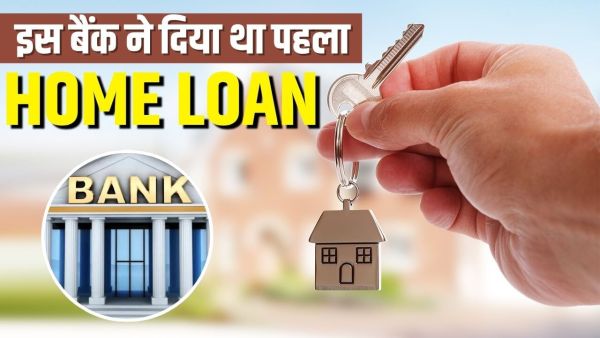
Country's first home loan
Home Loan History: In today's time, when someone thinks of buying a house, the first thought that comes to mind is home loan. Almost every bank is ready to provide loans at attractive interest rates and easy installments. But have you ever wondered how this trend started in India? There was a time when there was no such word as home loan in the banking system of our country. Today we will tell you who was the first to take a home loan in India, which bank gave this loan and how much amount was given.
When there was no such thing as 'home loan'…
The history of banking in India is very old. The establishment of the Reserve Bank of India (RBI) in 1935 gave it a centralized structure. Nationalization of banks in 1969 and 1980 made banking services accessible to the common man. But despite all this, till the 1970s, the focus of banks was mainly on industry and trade. There was no organized structure to provide loans to the common man for 'house building'. At a time when even government banks were hesitant to step into this sector, a company saw the potential in this market. That company was HDFC (Housing Development Finance Corporation). At that time HDFC was the only organized company in the home loan market.
70 thousand house, 30 thousand loan
The first person to take a home loan from the organized sector in India was DB Remedios. This is from the year 1978. Mr Remedios was building his house in the Malad area of Mumbai, the total cost of which at that time was around Rs 70,000. He approached HDFC for loan. HDFC sanctioned him a loan of Rs 30,000. This amount was less than half of the total cost of his house. Today, where people can easily take loan up to 80%, at that time getting less than 50% loan was a big start. This loan was given to him at a fixed interest rate of 10.5 percent. This loan of Rs 30,000 was not just a financial transaction; This was the first stone of foundation of housing finance sector in India
SBI changed the whole game with 'teaser rate'
Even after that first loan from DB Remedios, it took several years for the market to gain momentum. Statistics show that even till 1994, home loan interest rates were at a high level of 11 to 14 percent. At that time, the average age of the borrower was around 42 years and the average loan amount was only Rs 39,000.
The real change in the market came when State Bank of India (SBI) entered this segment in a big way. SBI introduced the concept of 'teaser rate', i.e. a low interest rate for the first few years, which increases later. SBI was able to do this because it had a large base of CASA (Current Account Savings Account) deposits, which kept its cost of funds low.
Other banks did not have this facility, so they adopted other methods to attract customers. They increased the loan-to-value (LTV) ratio, that is, they started paying more of the total value of the house as loan (say 70% or 80%).
The law that gave banks the power to deal with default
Before 2002, banks had a bigger concern. If a customer does not repay the home loan (defaults), how will the bank deal with it? There was no clear and strong law regarding this. Banks were afraid of giving loans because their money might get stuck. To end this fear, SARFAESI Act was implemented in 2002. This law gave the banks the right to take over the property in case of non-payment of loan and recover their money by auctioning it. This legal protection gave tremendous confidence to the banks. Only after this, most of the government and private banks openly entered the home loan market.
Contact to : xlf550402@gmail.com
Copyright © boyuanhulian 2020 - 2023. All Right Reserved.